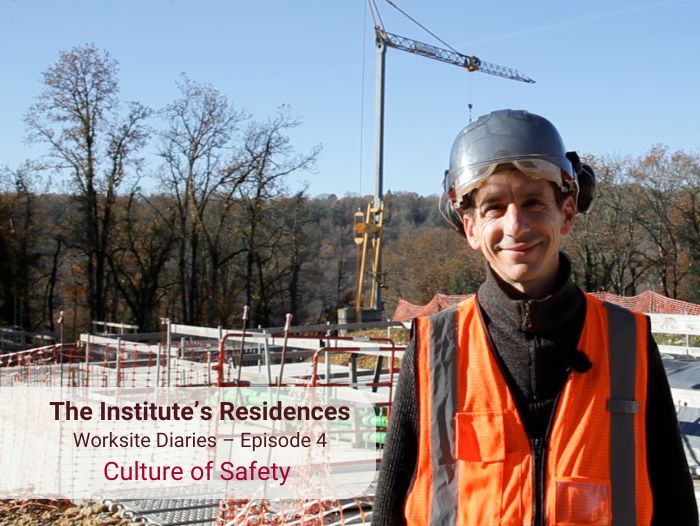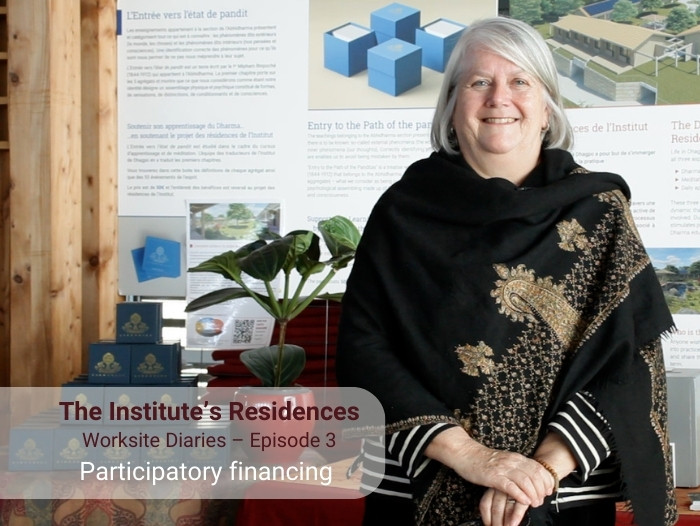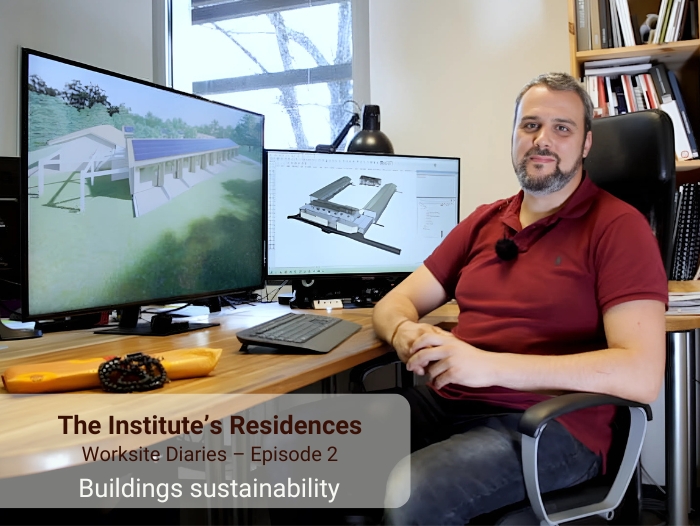Worksite Diaries – Episode 5
From our earliest age, learning to read requires a great deal of knowledge and skills—from decoding letters and building vocabulary to understanding the meaning of a text and being able to retell its story.
When it comes to Dharma, an altogether different culture has to be acquired from the ground up through the teaching of fundamental texts, one of the vocations of the Dhagpo Kagyu Ling Institute. Like any learning process, this acquisition happens in stages, and calls for understanding the precise meaning of words used in order to weave the link with practice over time.

In this new episode of our Worksite Diaries, Julie Walther, a resident and student at Dhagpo Kagyu Ling for fifteen years, describes the purpose of a box containing some 60 cards, each bearing a definition, which was designed to support both practitioners’ learning and the Residences project. The entirety of the profits from each box are donated to this project.
The definitions on the cards are drawn from the first Mipham Rinpoche’s Entry to the State of a Pandita, a text taught by Khenpo Chödrak Rinpoche during community retreats from 2010 onwards. The Dhagpo team of translators worked extensively on translating the root text from Tibetan to French and English, then selected the definitions reproduced on the flashcards. German and Spanish translations of the flashcards are underway.
Anger, desire-attachment, pride, perseverance, confidence, equanimity… by delving into the definitions of the five aggregates and the fifty-five mental events, we can begin to understand what increases virtue, or on the contrary hinders it, and thus, how to stay on the path of liberation from suffering.
During study groups, students take turns reading a paragraph from the transcript of the teaching to refine their understanding. Several students shared with Jigme Rinpoche the difficulty of assimilating such a large amount of information, of remembering it and connecting it to their practice. So, starting in 2014, Jigme Rinpoche asked students to start repeating the teachings they had received in their internal daily curriculum. “He asked us to practice repeating so that we wouldn’t forget. Rinpoche really put emphasis on remembering what we had learned,” says Julie. “We see that learning is inseparable from meditation because at some point, we will be able to recognize what we have learned, to see it directly in our practice. And that is thanks in particular to the fact that we keep reviewing these Dharma concepts over and over again and remembering them.”
When the Institute was built, people in fact asked Jigme Rinpoche who would come to teach there. Rinpoche replied,
Actually, we are going to build the Institute from within. It is the people here who will eventually teach.
More than trust in people, “it is rather an enormous trust in the Dharma that Rinpoche has. He knows that it works, that it takes time, but that at some point, it will work” says Julie.
Thus, during the daily internal curriculum, which takes place every morning for one hour and a half, the Institute’s students practice repeating foundational texts they have studied. Furthermore, they also meet in study groups to deepen their understanding. The public repetitions began in 2016, during the Clarity and Compassion course. Today, the Institute counts some thirty students who repeat teachings at Dhagpo Kagyu Ling, Dhagpo Kundreul Ling and Dhagpo Möhra, as well as in the urban centers (KTT). “The first benefit of these repetitions highlighted by Rinpoche is that we train ourselves to remember. When we prepare these repetitions together, we are obliged to deepen our understanding,” says Julie.
“This little box is like a concretization of everything that has been put into place here: the need for an Institute and library recommended by the 16th Gyalwa Karmapa as well as the foundational texts that he advised for study. The 14th Shamarpa Mipham Chökyi Lodrö systematized this curriculum and Jigme Rinpoche is implementing it and guiding the practitioners involved,” says Julie.
The Institute’s Residences will enable more people to engage in the three aspects of practice—Dharma study, meditation and daily application. During the recent Chenrezig course in May 2025, Jigme Rinpoche shared his vision of learning and practice:
The Institute develops its qualities in a very simple way, year after year, and this leads to a very important result. A form of mutual support takes place that allows one to combine Dharma study with one’s practice, on the basis of experience. It’s a development that takes place naturally.
Be part of this project:
Building Dhagpo Kagyu Ling happens together. You can participate in this project in different ways:
- make a donation (non-eligible for tax deduction)
- loan funds
- donate construction materials or share your skills to carry out the project
- acquire a blue box containing definitions from The Entry to the State of a Pandita (available at the library or at Dhagpo’s reception)
Keep informed and be part of this project.
For further information, don’t hesitate to contact us: dkl.donateurs@darkturquoise-ibis-734510.hostingersite.com
If you wish to support this ambitious project, it is possible to make a donation:
By bank transfer or check
![]() Download the generosity form in PDF format
Download the generosity form in PDF format
Via Paypal
(one-time/regular donation)



